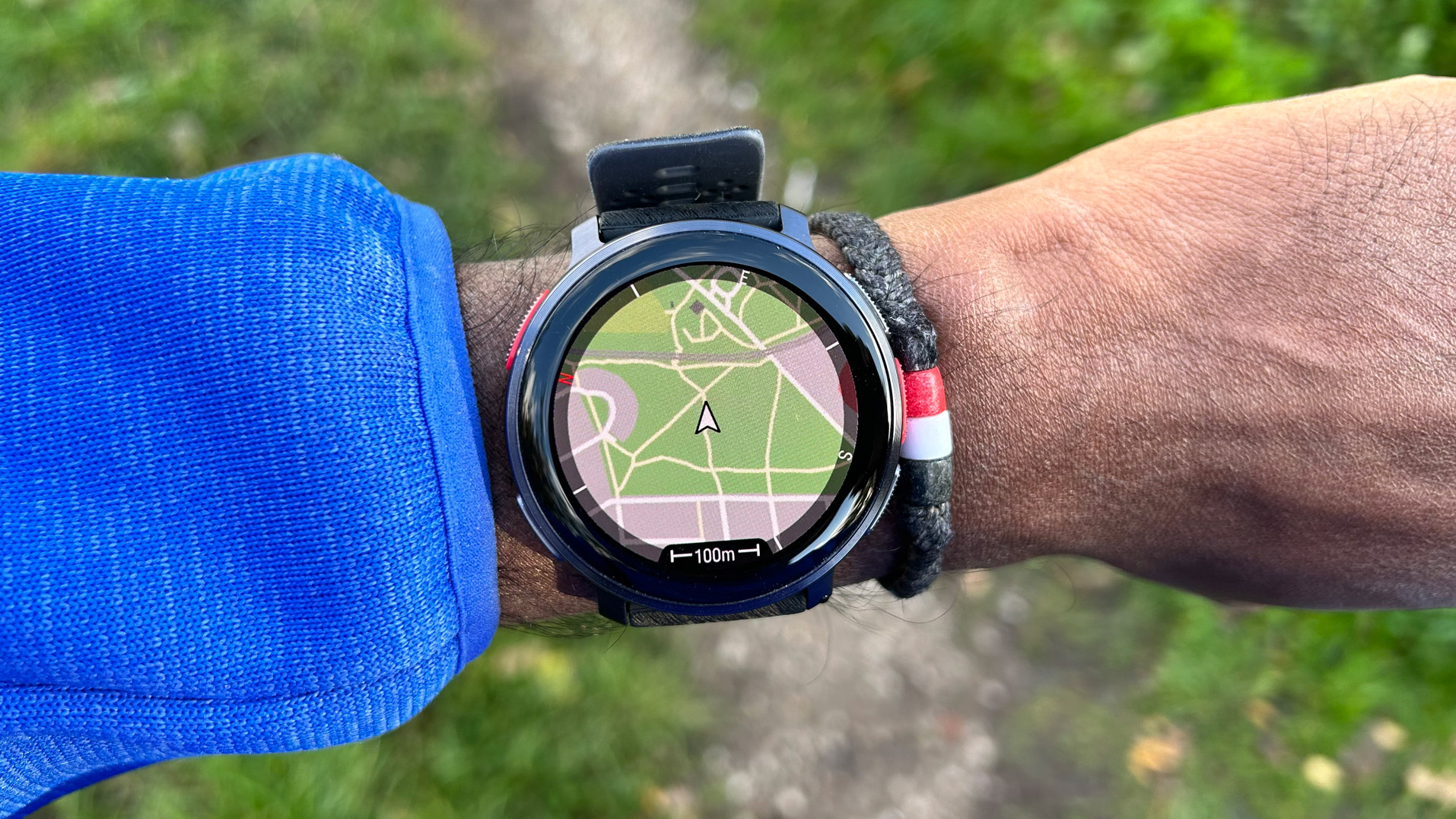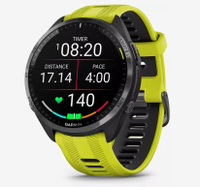TechRadar Verdict
The Polar Vantage V3 is a big update on the Vantage V2 and emerges as a strong AMOLED alternative to watches like the Garmin Forerunner 965. Without Polar's heart rate monitor, HR tracking leaves a little to be desired, but it's a fantastic watch worthy of a place on any aspiring marathon runner's wrist.
Pros
- +
Bright AMOLED display
- +
Added dual-band and offline maps
- +
Good battery performance
Cons
- -
Heart rate accuracy not majorly improved
- -
Can’t sync maps from Polar Flow mobile app
- -
Connection drops out with phone
Why you can trust TechRadar
Polar Vantage V3: One minute review
The Polar Vantage V3 is the update to Polar’s flagship premium multisports watch, which launched back in 2020. So we’ve waited a few years for its successor and Polar has rewarded that wait with some big features.
The headline addition might be the new AMOLED screen, but Polar has also introduced its new Elixir biosensor that can now deliver blood oxygen, skin temperature and heart rate via ECG to arm you with more metrics. It’s also adding offline maps and dual-frequency GPS to deliver more accurate outdoor data.
While the Vantage V2 was a solid offering from Polar, the Vantage V3 sees things step up a notch and it now feels like a better match for the competition. It's meriting an inclusion in our best running watch guide.
I’m still not entirely convinced its core heart rate powers are the best, but the Vantage V3 is definitely a multisports watch that stands out for all the right reasons.
Polar Vantage V3: Specifications
| Component | Polar Vantage V3 |
| Price | $599.90 / £519 / AU$899 |
| Dimensions | 47 x 50.8 x 14.5 mm |
| Weight | 57g |
| Case/bezel | Aluminium |
| Display | 1.39-inch 454 x 454 px AMOLED |
| GPS | GPS, GLONASS, Galileo, Beidou, QZSS Dual-Frequency |
| Battery life | 12 days / 60 hours GPS |
| Connection | Bluetooth 5.2 |
| Water resistant? | Yes, 5ATM |
Polar Vantage V3: Price and availability
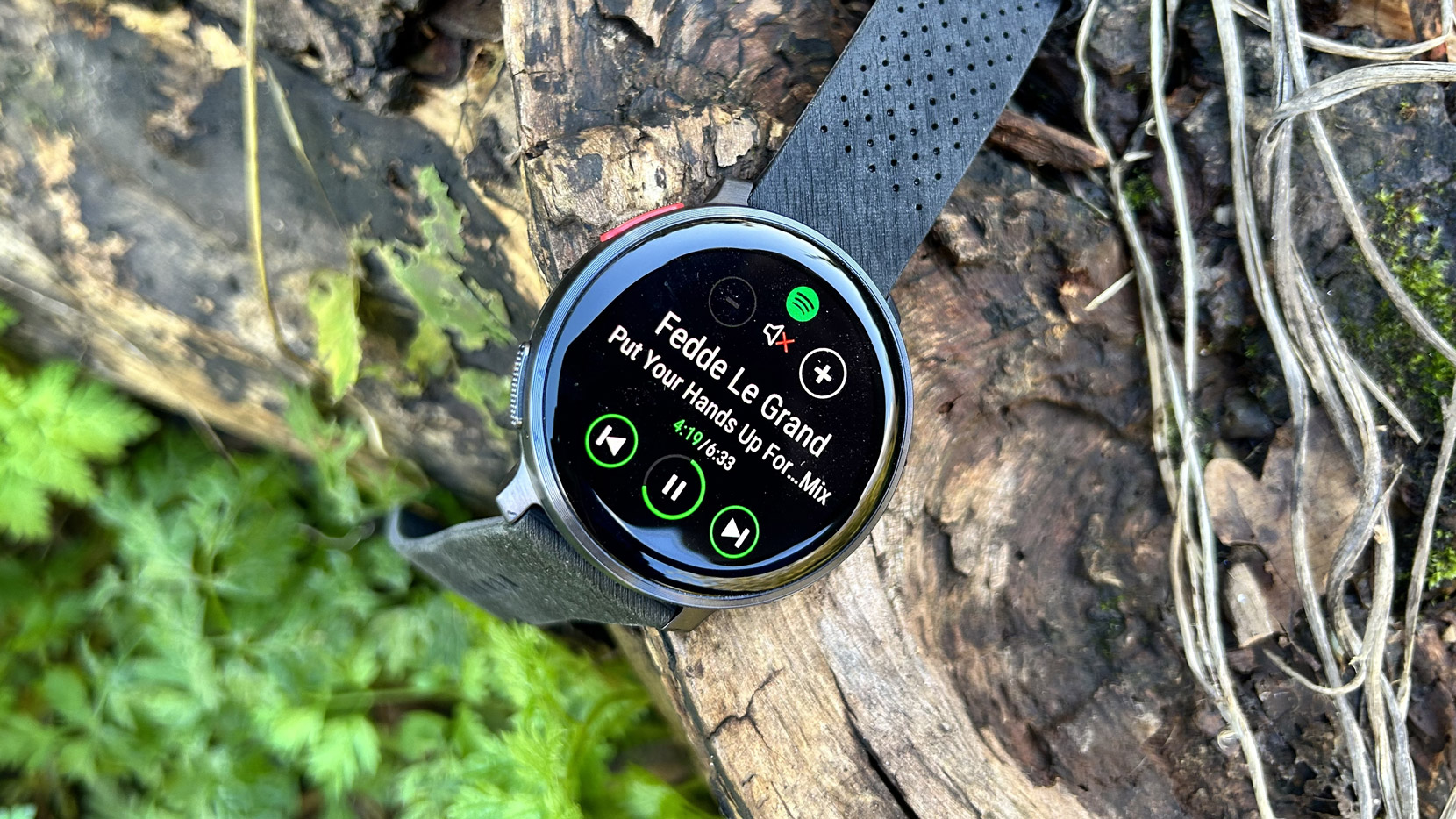
- $599.90 in the US
- £519 in the UK
- $899 in Australia
The Polar Vantage V3 was announced in October 2023 and is available to buy now directly from Polar and a small collection of retailers currently. It has a current RRP of £519 in the UK, $599.90 in the US and $899 when purchasing it in Australia, around the same asking price as the Garmin Forerunner 965.
- Value score: 4/5
Polar Vantage V3: Design and screen
- New AMOLED touchscreen
- Heavier than Vantage V2
- Nicely textured buttons
The Vantage V3 is Polar’s performance watch, so unlike its Grit series, it’s offering high grade materials, all while keeping things relatively light and comfortable to wear day and night.
It still measures in with a 47mm case like the V2 but is now thicker at 14.5mm compared to the 13mm thick case on the Vantage V2. It’s also got heavier, jumping from 52g to 57g. Those changes ultimately don’t alter the experience of strapping the V3 on. It’s still a pretty sleek-looking watch with aluminium in the case and the bezel to give it an attractive metallic frame.
The strap attached to that case is a workout-friendly silicone one, though you wouldn’t think it at first glance as Polar has clearly tried to give it the appearance of a traditional watch strap. I’m not sure I entirely love the feel of it though as it sits very snug towards and can pull at hairs. Both strap and watch case are waterproof up to 50 metres depth, which does mean you can use it in water but is a downgrade on the stronger 100 metre waterproofing available on the V2.
Around that aluminium case lies five physical buttons and they still have that nicely textured finish that makes them nice to press, even with sweaty or wet fingers. That surrounds a 1.39-inch, 454 x 454 resolution AMOLED touchscreen with Gorilla Glass on top to protect it against scratches. Along with the added pop of colour it’s a bigger display, and while there is a thin black bezel around the edge it’s well hidden by Polar’s predominantly black coloured watch faces.
It's a great AMOLED panel, with deep blacks, good max brightness and I’ve had no issues viewing it indoors, outdoors or in a swimming pool. The screen can be kept always-on with the raise to wake gesture support not as responsive as I’d have liked. What is nicely responsive is the software running on the V3. It’s slick, doesn’t lag and is a massive improvement on the experience of interacting with its predecessor.
When you need to charge it Polar includes a proprietary charging cable that clips into the port just below that new sensor array. It’s not the most secure of charging setups, and you just need to be mindful it’s out of the way of anything that might knock it out of place.
- Design score: 4.5/5
Polar Vantage V3: Features
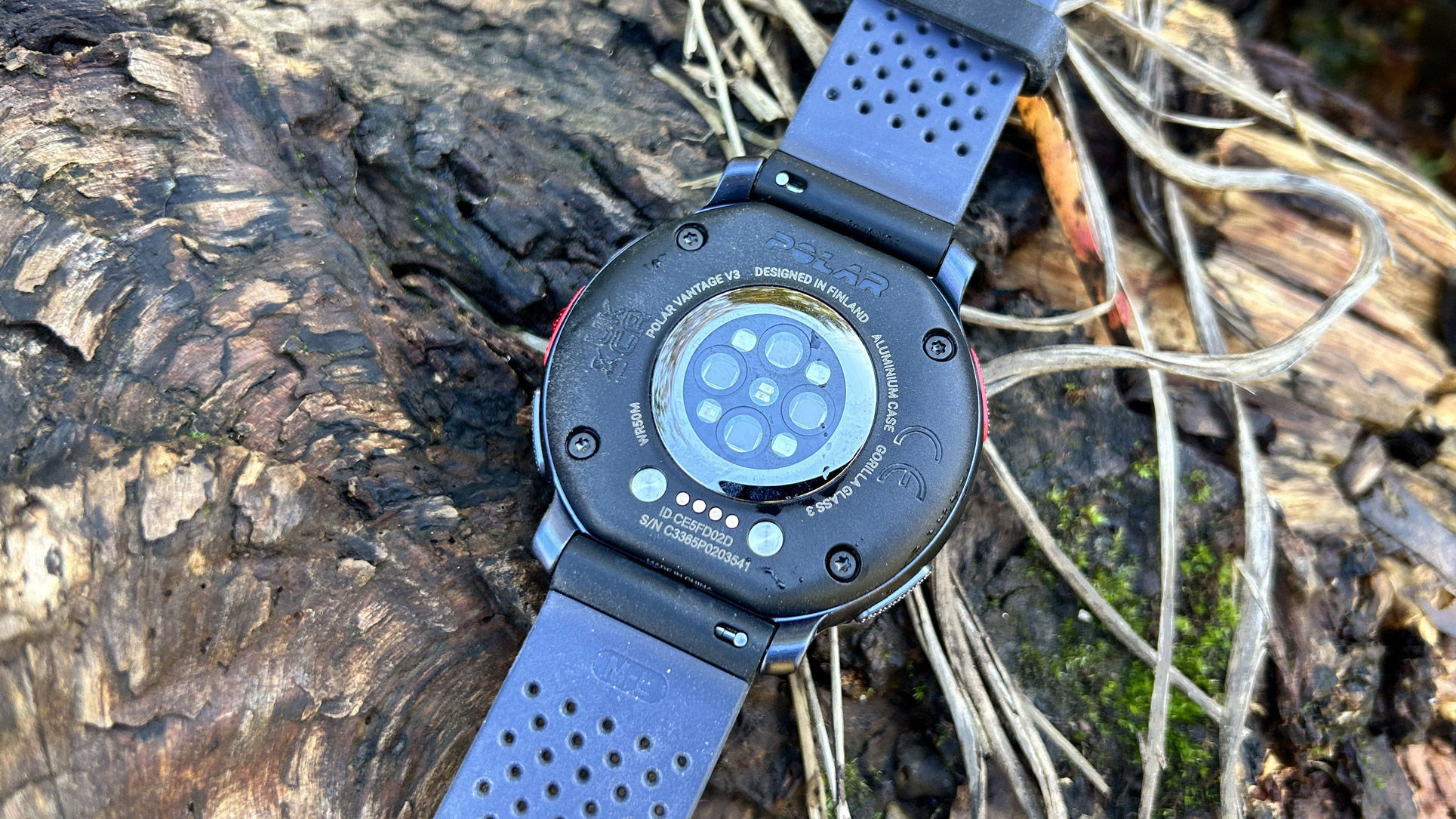
- Dual-frequency GPS
- Free offline maps
- Elixir sensor array
The Vantage V3 takes everything that was good on the V2 and aims to make improvements in some pretty important departments.
On the tracking front, Polar’s introduced dual-frequency GPS to enhance outdoor tracking accuracy for activities like running, when using the watch near tall buildings, in bad weather or densely forested areas. It’s now also adding free offline maps to join the existing turn-by-turn guidance offered by the Komoot app support.
There’s still over 150 sports profiles offered and Polar is bolstering one sport in particular, promising additional swim metrics including automatically detecting swimming style.
Around the back of the watch is where you’ll find Polar’s new Elixir sensor array, which sees a change in the design of the optical setup that’s now capable of capturing blood oxygen, skin temperature, take ECG heart rate measurements, with the upgraded Gen 4 version of Polar’s optical heart rate sensor also in tow.
Polar continues to offer rich sleep and training features, so you’re still getting access to its Training Load Pro and Recovery Pro insights, with Polar’s FitSpark suggested daily workouts and FuelWise fueling reminders for endurance athletes also still on board. It’s added the voice guidance support from the Ignite 3 along with the Work-Rest-Guide, which uses heart rate data to dictate when you should rest between workout sets.
On the smartwatch front, Polar still keeps things simple once again, offering the ability to view your notifications, change watch faces and control music playback on your paired smartphone. The added AMOLED screen and boost in CPU performance certainly makes these features much nicer to use day-to-day.
- Features score: 4.5/5
Polar Vantage V3: Performance
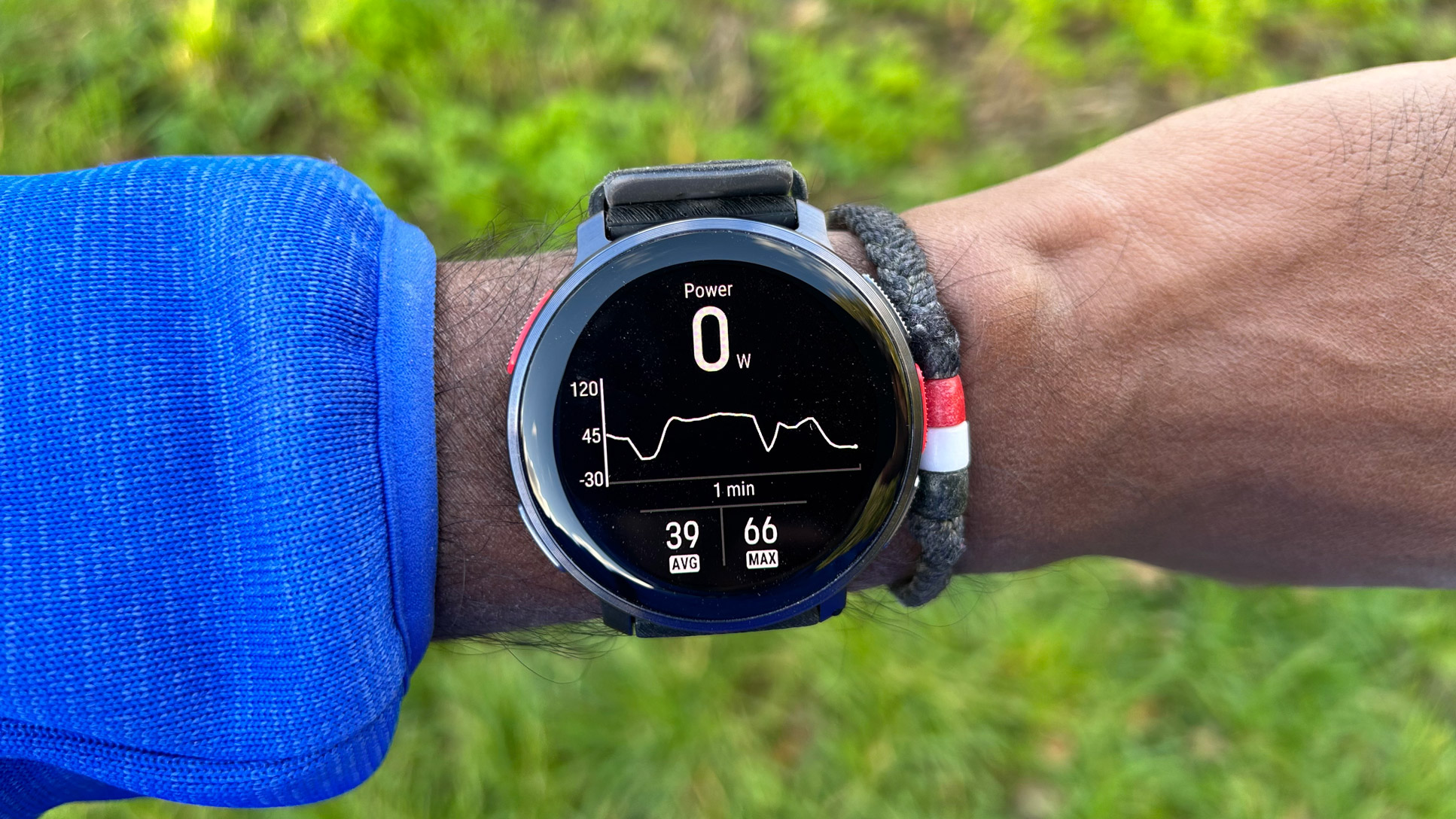
- Welcome dual-frequency GPS accuracy boost
- Heart rate still so-so
- Delivers good battery life and overall performance
The V3 is Polar’s premium multisports watch, so it’s giving you the best the company has to offer in watch features. It’s bringing in the dual-band GPS support it debuted on the Polar Ignite 3, it’s boosting the mapping and navigation features it introduced on its Grit outdoor watch and the new Elixir sensor aims to offer boost in accuracy to improve the reliability of sports, wellness and sleep tracking.
Polar’s dual frequency GPS, which like Apple, Garmin and Suunto among others, means the V3 can use the L1 and L5 frequency bands to enhance positioning tracking accuracy. I wasn’t massively impressed with it on the Ignite 3 where Polar first introduced it, but it’s certainly more reliable here on the V3. I’ve been using it alongside Garmin and Suunto’s similar modes and while just slightly off on the distance tracking compared to the Garmin and Suunto, it wasn’t enough to cause any concern. Mapped routes inside the Polar Flow app didn’t raise any alarms either.
Polar says it’s also boosted the swimming metrics on offer, so I hit the pool along with the Form Swim Goggles and Garmin Forerunner 965, two swim trackers I know deliver good tracking accuracy in the water. Despite delivering good core swim data, I can’t say I saw anything particularly groundbreaking here. You’ll get quickest pace and average pace stats along with average and max cadence metrics and that’s really about it.
Then there’s the reliability of that new Elixir sensor, which promises an upgraded optical heart rate sensor, though I can’t say the accuracy has been massively upgraded for me. Even on steady paced workouts I found the optical heart rate sensor tended to report lower average heart rate readings and maximum heart rate readings seemed higher against a heart rate monitor chest strap. It’s not a terrible performer, but it’s also not the best performance I’ve seen from a wrist-based heart rate monitor. If in doubt, pair up an external heart rate monitor.
Polar’s Elixr sensor array also brings new blood oxygen tracking, skin temperature tracking at night, and ECG measurements when you hold your finger on the top physical button for 30 seconds. All of these new metrics place the onus on your simply tracking and analyzing trends, which can help you decide whether you should be taking it easy or you’re in good shape to have a strenuous day.
That insight also works in tandem with Polar’s rich sleep tracking, something that does separate it from the sports watch competition. Along with core sleep tracking stats, it’s offering you nightly recharge measurements, nightly skin temperature and the boost from sleep insights, which feels similar to Garmin’s Body Battery energy monitor. Crucially, the sleep data is some of the most reliable I’ve come across on a watch and it held up well against the Oura Ring Gen 3’s great sleep tracking.
Another big positive is that unlike previous Polar watches, comprehensive sleep tracking doesn't show a huge drain on battery, which on the whole, is a big improvement on the Vantage V2. There’s now a bigger 488mAh capacity battery, which Polar says can last for up to 12 days in its daily watch mode and 61 hours in training mode, up from 40 hours. I found the Vantage V3 could last a week with regular tracking using the top GPS accuracy mode. When you opt to keep the screen set to always-on, you’re going to get less than 5 days, and using features like GPS will see a further dent too.
- Performance score: 4.5/5
Polar Vantage V3: Scorecard
| Category | Comment | Score |
| Value | Around the same price point as the Garmin Forerunner 965. | 4/5 |
| Design | Polar stays true to the Vantage V2 design and gives it a lovely AMOLED screen to elevate that metal-heavy look. | 5/5 |
| Features | The added mapping, dual-frequency GPS and slicker smartwatch features make up for some shortcomings in the heart rate tracking department. | 4.5/5 |
| Performance | Boosted overall battery, lag-free software and core sports tracking and training features make the V3 a solid performer. | 4.5/5 |
Polar Vantage V3: Should I buy?
Buy it if...
You want the best Polar sports watch
The added AMOLED display is just one of the new features that makes this Polar’s most impressive and feature-packed watch.
You want lots of sleep-tracking stats
Along with reliable sleep data, Polar also goes deep into using that sleep data to better inform your recovery needs.
You want an attractive-looking sports watch
The V3’s aluminum-heavy design that doesn’t weigh heavy, those textured buttons and cleverly disguised black bezel combine to give Polar’s watch a likeable design.
Don't buy it if...
You want the best sports watch and smartwatch mash-up
Polar simply doesn’t match what Garmin and Apple offer on the smartwatch front, if you want something that’s more useful outside of tracking time.
You want great wrist-based heart rate monitoring
It might pack in an upgraded heart rate sensor compared to the V2, but the accuracy improvements just weren’t there for us.
You easy to understand training analysis
While Polar offers a lot on the training features front, it takes a bit of work to really put those extra insights into context of your training needs.
Also consider
| Component | Polar Vantage V3 | Garmin Forerunner 965 | Apple Watch Ultra 2 |
| Price | $599.90 / £519 / AU$899 | $600 / £600 / AU$999 | $799 / £799 / AU$1,399 |
| Dimensions | 47 x 50.8 x 14.5 mm | 47.1 x 47.1 x 13.2 mm | 49 x 41 x 14 mm |
| Weight | 57g | 52g | 61g |
| Case/bezel | Aluminium | Titanium bezel, plastic case | Titanium |
| Display | 1.39-inch 454 x 454 px AMOLED | 454 x 454 1.4-inch AMOLED touch | 502 x 410 px poly-silicon always-on OLED Retina Display |
| GPS | GPS, GLONASS, Galileo, Beidou, QZSS Dual-Frequency | GPS, GLONASS, Galileo | Yes (unspecified) |
| Battery life | 12 days / 60 hours GPS | Watch mode 23 days, GPS only 31 hours, GPS + Music 10 hours | 36 hours |
| Connection | Bluetooth | Bluetooth, ANT+, WiFi | Bluetooth 5.3, Wi-Fi, LTE |
| Water resistant? | Yes, 5ATM | Yes, 5ATM | Yes, WR100 (diveproof) |
Garmin Forerunner 965
Garmin's top-tier running watch, now with an AMOLED screen.
Apple Watch Ultra 2
The best running and adventuring watch for Apple users and weekend warriors.
Read our Apple Watch Ultra 2 review here
Michael is a freelance journalist who has covered consumer technology for over a decade and specializes in wearable and fitness tech. Previously editor of Wareable, he also co-ran the features and reviews sections of T3, and has a long list of bylines in the world of consumer tech sites.
With a focus on fitness trackers, headphones, running wearables, phones, and tablet, he has written for numerous publications including Wired UK, GQ, Men's Fitness, BBC Science Focus, Metro and Stuff, and has appeared on the BBC Travel Show. Michael is a keen swimmer, a runner with a number of marathons under his belt, and is also the co-founder of YouTube channel The Run Testers.
